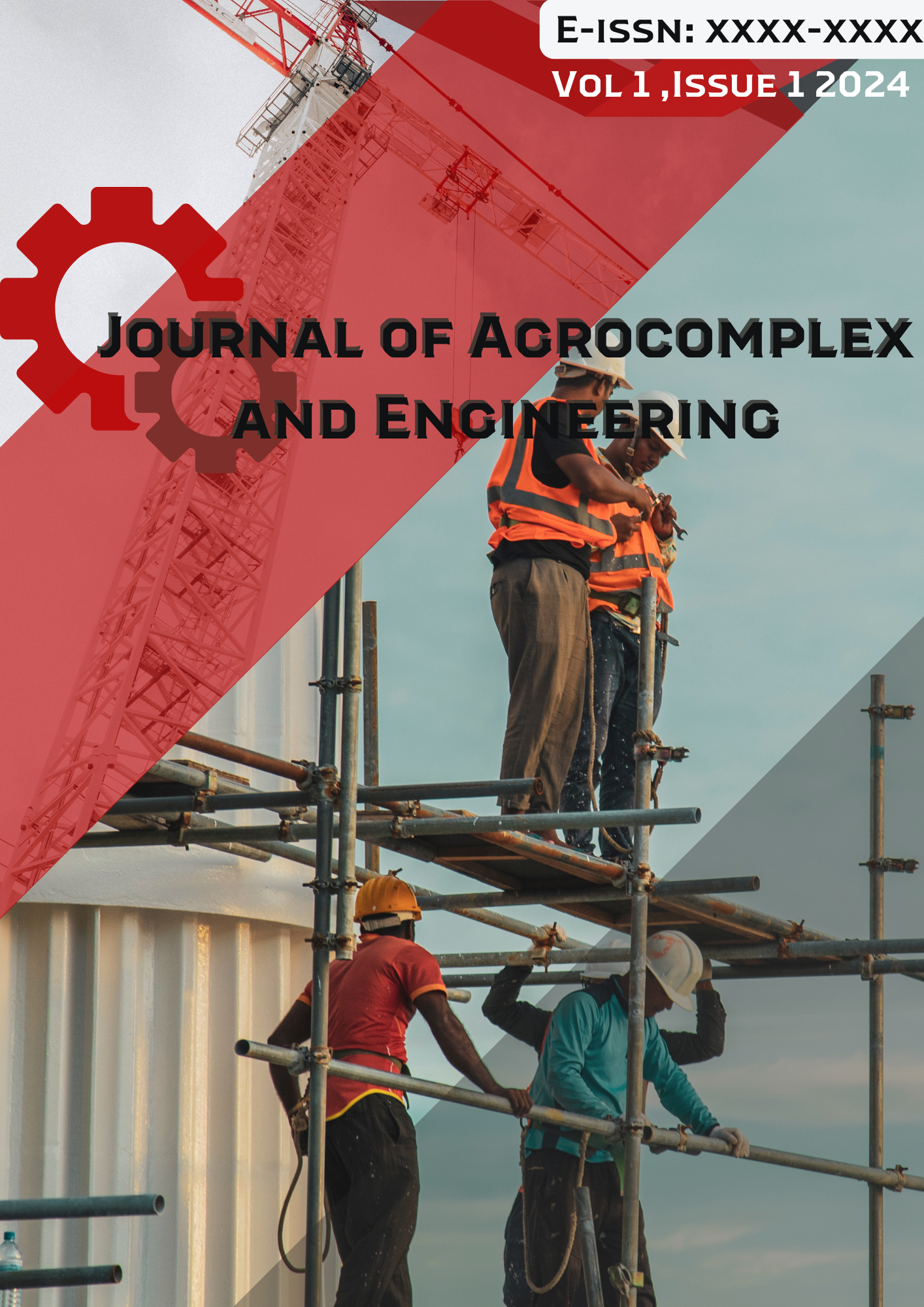Aeroponic System Engineering to Optimize Horticultural Plant Growth
Keywords:
Aeroponics, Horticultural Crops, Water Efficiency, Vegetative Growth, Plant BiomassAbstract
Purpose: This study aims to evaluate the effectiveness of aeroponic systems in optimizing horticultural plant growth compared to conventional soil-based cultivation methods, with a focus on vegetative growth, biomass accumulation, and water use efficiency.
Subjects and Methods: The research subjects were lettuce horticultural plants cultivated for eight weeks in two different systems, aeroponic and conventional. In the aeroponic system, plants were grown with roots suspended in the air and sprayed with nutrient solution in the form of mist at certain intervals, while in the conventional system, plants were grown in soil media with standard fertilization. Parameters observed included plant height, number of leaves, wet and dry weight, and water use efficiency. Data were analyzed descriptively and comparatively by calculating the average, standard deviation, and percentage increase for each treatment.
Results: The results showed that the aeroponic system provided significant improvements in all growth parameters compared to the conventional method. Aeroponic plants reached an average height of 35.4 cm in the 8th week, higher than 27.8 cm in the conventional system. The number of leaves in the aeroponic system reached 30, while the conventional system had 23. The wet and dry weights of aeroponic were 245.3 g and 45.6 g, respectively, greater than 178.4 g and 32.7 g in the conventional system. The water use efficiency of aeroponics was also much higher, namely 19.6 g/L compared to 5.6 g/L in the conventional system.
Conclusions: Aeroponic systems have proven superior in enhancing horticultural plant growth while simultaneously conserving water. These findings support aeroponics as a sustainable, efficient, and relevant alternative modern agricultural technology for application in areas with limited land and water resources.
References
Dixon, G. R., Collier, R. H., & Bhattacharya, I. (2014). An assessment of the effects of climate change on horticulture. In Horticulture: Plants for People and Places, Volume 2: Environmental Horticulture (pp. 817-857). Dordrecht: Springer Netherlands. https://doi.org/10.1007/978-94-017-8581-5_10
Fetra, R., Erfit, E., & Zamzami, Z. (2021). Analisis produk tanaman pangan dan hortikultura serta strategi pengembangannya di Kabupaten Kerinci. Jurnal Paradigma Ekonomika, 16(3), 589-600. https://doi.org/10.22437/jpe.v16i3.12261
Glenn, D. M., Kim, S. H., Ramirez‐Villegas, J., & Läderach, P. (2013). Response of perennial horticultural crops to climate change. Horticultural Reviews Volume 41, 47-130. https://doi.org/10.1002/9781118707418.ch02
Gruda, N. S. (2019). Increasing sustainability of growing media constituents and stand-alone substrates in soilless culture systems. Agronomy, 9(6), 298. https://doi.org/10.3390/agronomy9060298
Hussain, A., Iqbal, K., Aziem, S., Mahato, P., & Negi, A. K. (2014). A review on the science of growing crops without soil (soilless culture)-a novel alternative for growing crops. International Journal of Agriculture and Crop Sciences, 7(11), 833.
Lakhiar, I. A., Gao, J., Syed, T. N., Chandio, F. A., & Buttar, N. A. (2018). Modern plant cultivation technologies in agriculture under controlled environment: A review on aeroponics. Journal of plant interactions, 13(1), 338-352. https://doi.org/10.1080/17429145.2018.1472308
Malhotra, S. K. (2017). Horticultural crops and climate change: A review. The Indian Journal of Agricultural Sciences, 87(1), 12-22. https://doi.org/10.56093/ijas.v87i1.67138
Pitaloka, D. (2017). Hortikultura: Potensi, pengembangan dan tantangan. G-Tech: Jurnal Teknologi Terapan, 1(1), 1-4. https://doi.org/10.33379/gtech.v1i1.260
Sahri, R. J., Hidayah, N., Fadhillah, N., Fuadi, A., Abidin, I., Hannifa, W., & Wulandari, S. (2022). Tanaman pangan sebagai sumber pendapatan petani di Kabupaten Karo. Jurnal Inovasi Penelitian, 2(10), 3223-3230. https://doi.org/10.47492/jip.v2i10.1348
Silva Dias, J. (2010, August). World importance, marketing and trading of vegetables. In XXVIII International Horticultural Congress on Science and Horticulture for People (IHC2010): International Symposium on 921 (pp. 153-169). https://doi.org/10.17660/ActaHortic.2011.921.18
Treftz, C., & Omaye, S. T. (2016). Hydroponics: Potential for augmenting sustainable food production in non-arable regions. Nutrition & Food Science, 46(5), 672-684. https://doi.org/10.1108/NFS-10-2015-0118
Tunio, M. H., Gao, J., Shaikh, S. A., Lakhiar, I. A., Qureshi, W. A., Solangi, K. A., & Chandio, F. A. (2020). Potato production in aeroponics: An emerging food growing system in sustainable agriculture forfood security. Chilean journal of agricultural research, 80(1), 118-132.
Verdoliva, S. G., Gwyn-Jones, D., Detheridge, A., & Robson, P. (2021). Controlled comparisons between soil and hydroponic systems reveal increased water use efficiency and higher lycopene and β-carotene contents in hydroponically grown tomatoes. Scientia Horticulturae, 279, 109896. https://doi.org/10.1016/j.scienta.2021.109896
Wang, S., Xu, T., & Li, X. (2022). Development status and perspectives of crop protection machinery and techniques for vegetables. Horticulturae, 8(2), 166. https://doi.org/10.3390/horticulturae8020166
Zhilyakov, D. I., Vertakova, Y. V., & Kharchenko, E. V. (2020, August). Trends and prospects for the development of horticulture and vegetable growing in the region. In IOP Conference Series: Earth and Environmental Science (Vol. 548, No. 8, p. 082039). IOP Publishing. https://doi.org/10.1088/1755-1315/548/8/082039
Downloads
Published
Issue
Section
License
Copyright (c) 2025 Journal of Agrocomplex and Engineering

This work is licensed under a Creative Commons Attribution-ShareAlike 4.0 International License.






